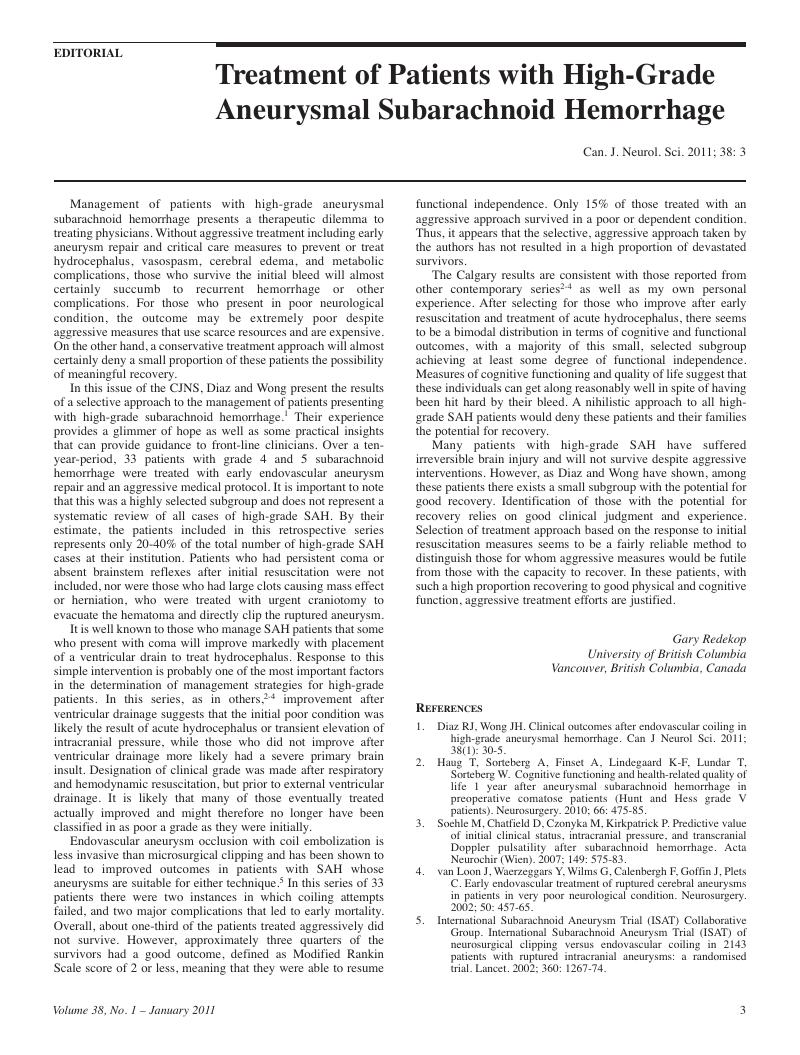No CrossRef data available.
Article contents
Treatment of Patients with High-Grade Aneurysmal Subarachnoid Hemorrhage
Published online by Cambridge University Press: 02 December 2014
Abstract
An abstract is not available for this content so a preview has been provided. As you have access to this content, a full PDF is available via the ‘Save PDF’ action button.

- Type
- Editorial
- Information
- Copyright
- Copyright © Canadian Neurological Sciences Federation 2011
References
1
Diaz, RJ, Wong, JH.
Clinical outcomes after endovascular coiling in high-grade aneurysmal hemorrhage. Can J Neurol Sci. 2011; 38(1): 30–5.CrossRefGoogle ScholarPubMed
2
Haug, T, Sorteberg, A, Finset, A, Lindegaard, K-F, Lundar, T, Sorteberg, W.
Cognitive functioning and health-related quality of life 1 year after aneurysmal subarachnoid hemorrhage in preoperative comatose patients (Hunt and Hess grade V patients). Neurosurgery. 2010; 66: 475–85.CrossRefGoogle ScholarPubMed
3
Soehle, M, Chatfield, D, Czonyka, M, Kirkpatrick, P.
Predictive value of initial clinical status, intracranial pressure, and transcranial Doppler pulsatility after subarachnoid hemorrhage. Acta Neurochir (Wien). 2007; 149: 575–83.CrossRefGoogle Scholar
4
van Loon, J, Waerzeggars, Y, Wilms, G, Calenbergh, F, Goffin, J, Plets, C.
Early endovascular treatment of ruptured cerebral aneurysms in patients in very poor neurological condition. Neurosurgery. 2002; 50: 457–65.Google ScholarPubMed
5
International Subarachnoid Aneurysm Trial (ISAT) Collaborative Group. International Subarachnoid Aneurysm Trial (ISAT) of neurosurgical clipping versus endovascular coiling in 2143 patients with ruptured intracranial aneurysms: a randomised trial. Lancet. 2002; 360: 1267–74.CrossRefGoogle Scholar


